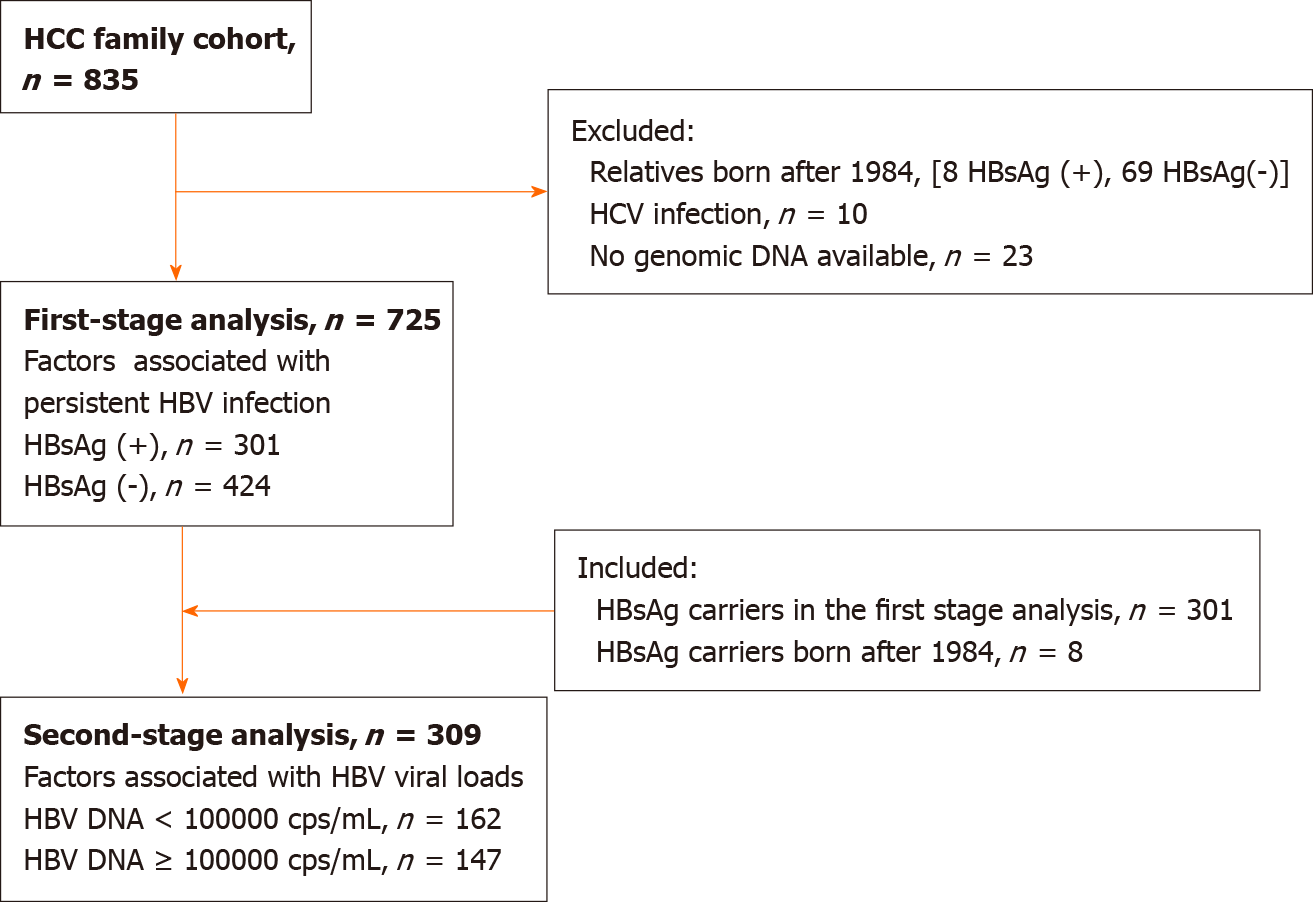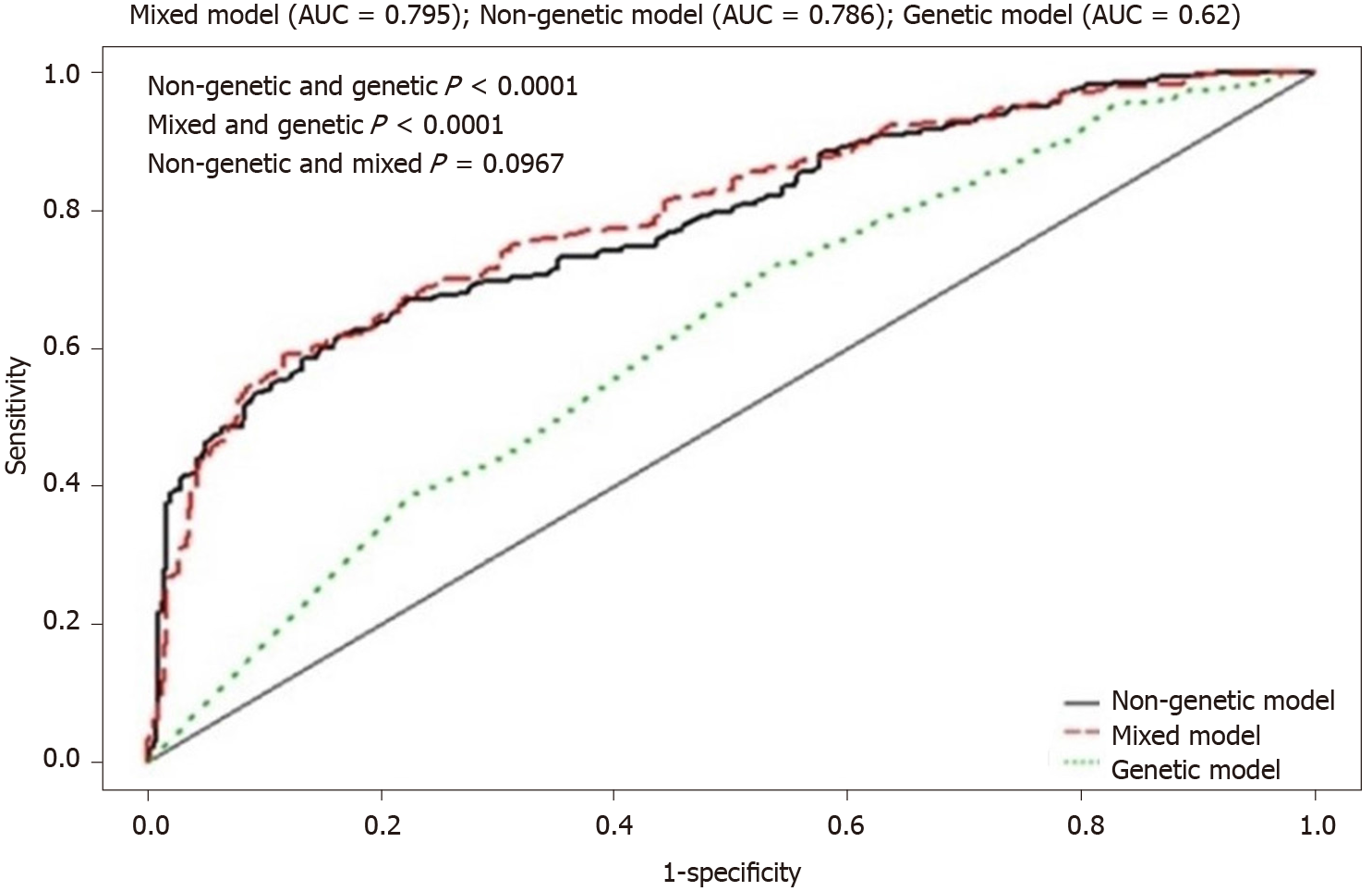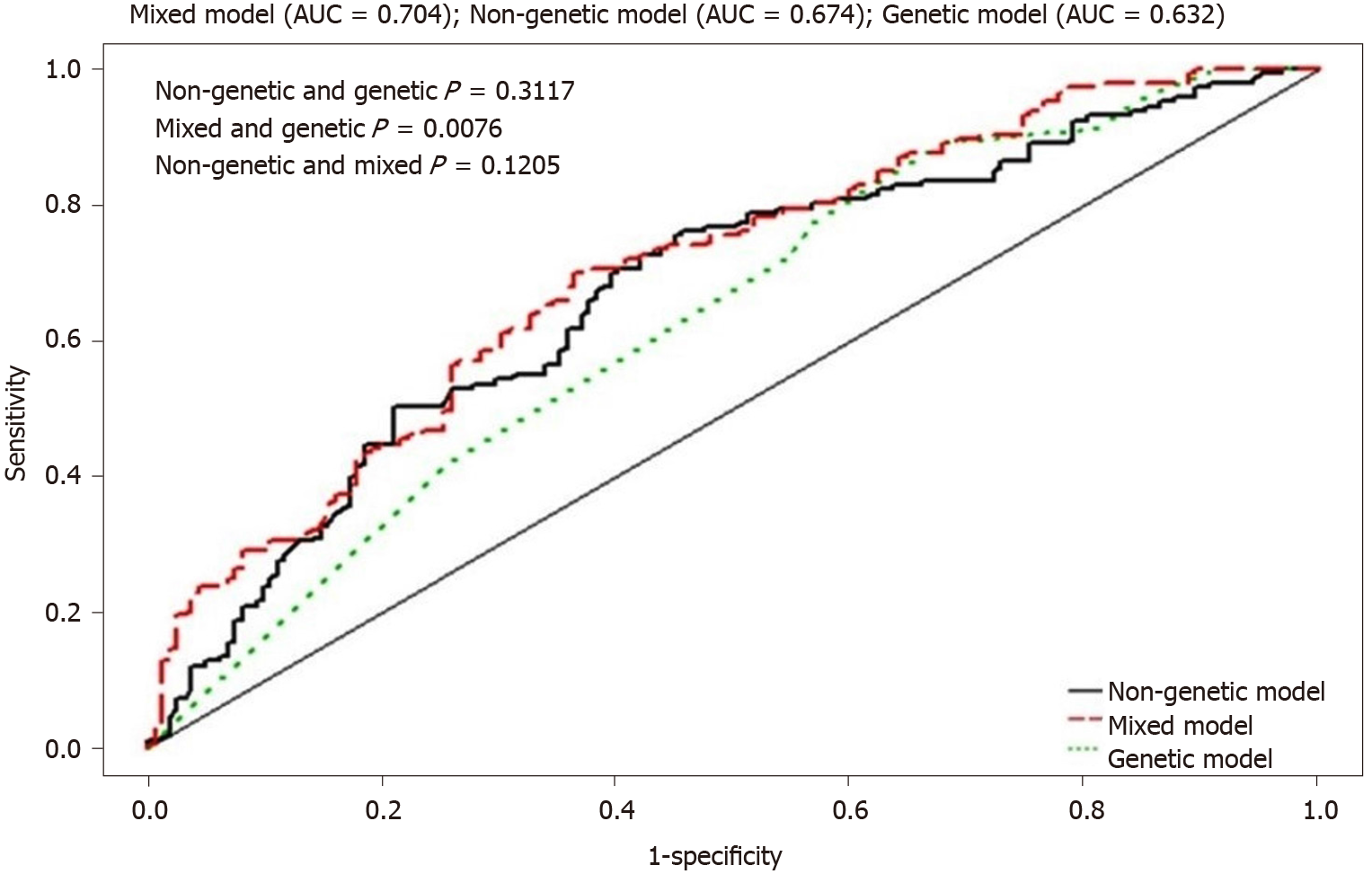Copyright
©The Author(s) 2021.
World J Gastroenterol. Oct 7, 2021; 27(37): 6262-6276
Published online Oct 7, 2021. doi: 10.3748/wjg.v27.i37.6262
Published online Oct 7, 2021. doi: 10.3748/wjg.v27.i37.6262
Figure 1 Study flow chart.
Hepatitis B virus persistent infection and viral load were analyzed in a hepatocellular carcinoma family cohort. HCC: Hepatocellular carcinoma; HBV: Hepatitis B virus; HCV: Hepatitis C virus; HBsAg: Hepatitis B surface antigen.
Figure 2 First-stage persistent hepatitis B virus infection.
Genetic, nongenetic, and combined risk factors for persistent hepatitis B virus (HBV) infection were evaluated by area under the receiver operating characteristic curves derived from generalized estimating equation regression models. Significantly higher areas under the curve for nongenetic compared with genetic factors (P < 0.001) suggest that nongenetic factors played a major role in persistent HBV infection. AUC: Area under the receiver operating characteristic curve.
Figure 3 Second-stage hepatitis B virus viral load.
The genetic, nongenetic, and combined risk factors for hepatitis B virus (HBV) viral load were evaluated by area under the receiver operating characteristic curves derived from generalized estimating equation regression models. The difference between the receiver operating characteristic curves of genetic and nongenetic factors was not significant (P = 0.3117). The finding suggests that both factors contributed to the HBV viral load. AUC: Area under the receiver operating characteristic curve.
- Citation: Hsieh AR, Fann CSJ, Lin HC, Tai J, Hsieh SY, Tai DI. Hepatitis B virus persistent infection-related single nucleotide polymorphisms in HLA regions are associated with viral load in hepatoma families. World J Gastroenterol 2021; 27(37): 6262-6276
- URL: https://www.wjgnet.com/1007-9327/full/v27/i37/6262.htm
- DOI: https://dx.doi.org/10.3748/wjg.v27.i37.6262











